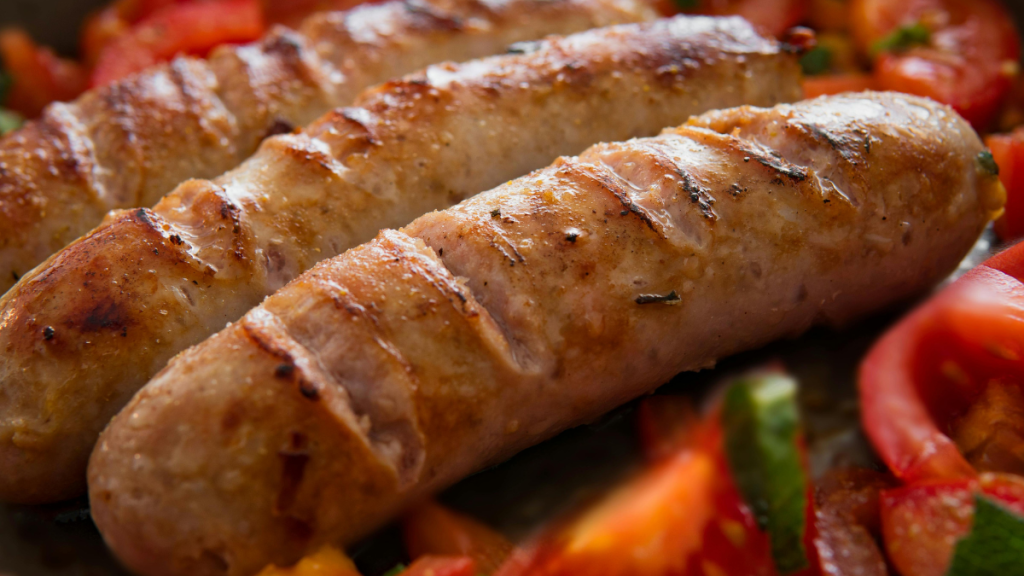If you’ve been stuffing your own sausage to sell to local restaurants, farmer’s market stands, or other enterprises at scale, there’s a good chance you’ve been obsessing over grind size, fat ratios, and spice levels. That’s fair. Those things matter.
But there’s something else that quietly makes or breaks the whole operation, and it’s probably sitting in your walk-in (or dry storage) right now, neglected and underappreciated. Casings. The not-so-glamorous wrapper that turns seasoned meat into actual sausage. When you get it right, your name might end up on a fine dining menu: “Local charcuterie selection from YOUR NAME Farms.” When you get it wrong, your customers are left with a chewy mess that splits halfway through cooking or worse, a sausage that falls apart entirely. And then your sales fall off.
Don’t let the casing be an afterthought. The right one doesn’t just hold everything together—it elevates everything you worked so hard to get right.
Casings 101: Not Just a Meat Sock
It’s easy to treat casings like a technicality, but they’re anything but. Whether you’re making smoky kielbasa, fresh bratwurst, or old-school Italian links, the casing shapes the texture, the bite, and even the cook time. It can make your sausage rustic or refined, rustic or deli-counter perfect. It also helps trap moisture, encourages browning, and holds your work through the chaos of boiling, grilling, or pan-frying.
Some aspiring artisans try to get around the whole casing thing by making “patty-style” sausages or wrapping their mix in plastic to shape it, but that’s just putting lipstick on ground pork. If you want the real deal, you need a proper casing. And not just any one. Natural options, like sheep or hog, are flexible and forgiving, perfect for most home uses. But then there’s the secret weapon of backyard smoking setups: mahogany fibrous casings. These synthetic-but-breathable wonders hold their shape, take smoke like a dream, and peel easily after curing. They’ve got that deep, dark finish that makes your homemade summer sausage look like it came from an old European butcher shop. It’s one of those tools you try once and never stop using.
Prepping Casings Without Making It a Chore
The biggest mistake new sausage-makers make? Rushing the casing prep. Natural ones, especially, need a little attention. They’re packed in salt for a reason, and they need a soak—usually at least thirty minutes in warm water—to become supple and manageable. Skipping that step is a fast track to tearing, uneven stuffing, or blowouts when you cook them. And if you’re using a dry-cure casing like collagen or fibrous, read the label. Some need a quick rinse, some don’t. If your instructions say to soak, don’t wing it. That extra five minutes matters.
You also want to rinse the insides of natural casings. Some people skip that part, thinking it’s too tedious. But that’s where you get rid of any lingering funk or saltiness that might throw off the flavor. It doesn’t need to be fancy—just run some water through them like you would a balloon. Once they’re soft, you can slip one end onto your stuffing nozzle and feed the rest on like a sleeve. It’s surprisingly satisfying once you get the rhythm.
As for storage, if you’re not using the whole pack, don’t toss them back in dry. Store the remainder in a saltwater brine in the fridge, and they’ll keep for weeks, if not longer. Just never freeze them. That’s a one-way ticket to crumbling disappointment.
The Stuffing Process: Slower Is Smoother
Once you’ve got your mix ready and your casing prepped, you’re into the actual art of stuffing. This is where most people try to speed up, and where most sausages go sideways. You want even pressure. Not too fast, not too slow. Let the casing glide off the horn with the filling—not ballooning out, not lagging behind. Overstuffed sausages split in the pan. Understuffed ones sag and curl weirdly when they cook.
A trick that saves a lot of grief is to work with a partner. One person cranks or feeds, the other guides the casing. If you’re flying solo, stop often to check how things are looking. And don’t forget to twist off your links as you go—or after, if you prefer batching. A few gentle pricks with a needle to release air bubbles is fine. Don’t go jabbing wildly. You’re not deflating a bike tire.
Also, it’s okay if your first few look like swollen thumbs. You’ll get better. The meat doesn’t care what the casing looks like. The flavor will still show up.
The Wrap That Really Matters
For a chef chasing that next-level satisfaction of making sausage in-house to the entrepreneur hoping to become a household name in three counties, sausage casings aren’t a technicality—they’re the key. They frame your work, literally and figuratively, and they bring a kind of professional polish to a craft that’s messy, tactile, and weirdly addictive once you start. No matter what kinds of sausage you hope to be known for, choosing the right casing and handling it with care may be what gets you from “decent sales” to “mentioned on Food Network.”

